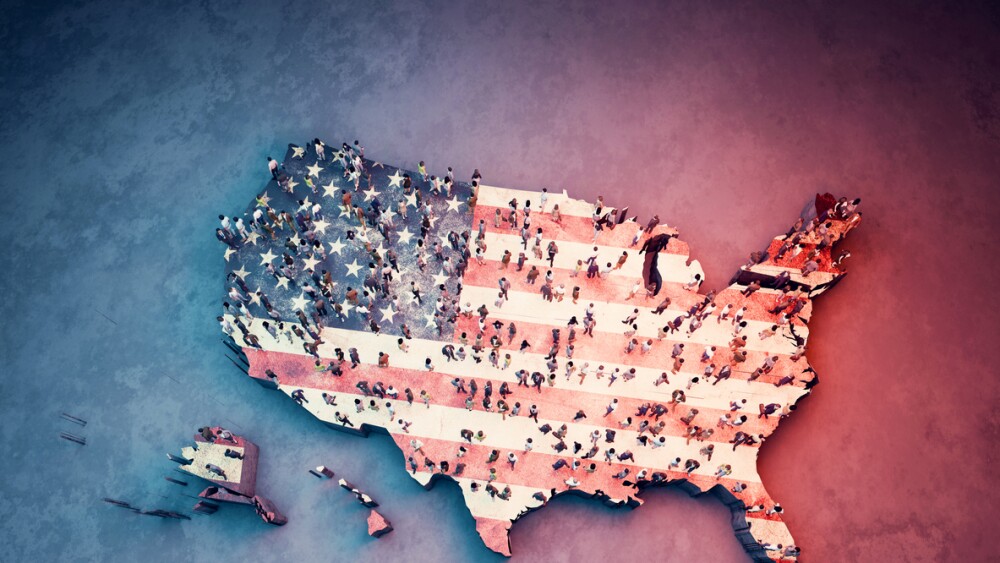Continued fallout from the IRA, heightened antitrust enforcement and the rise of AI will all shape the first wave of biotech mergers and acquisitions coming this year, experts tell BioSpace.
Pictured: Illustration of two professionals shaking hands at the top of upward facing arrows/iStock, Nuthawut Somsuk
Continued fallout from the IRA, heightened antitrust enforcement and the rise of AI will all shape the first wave of biotech mergers and acquisitions coming this year, experts tell BioSpace.
Last year was economically challenging for households and businesses alike, and biotechs are not immune to the market’s fluctuations, with layoffs and culled programs making regular headlines. But according to Adrienne Ellman, an M&A Partner at Hogan Lovells US LLP focusing on biotech transactions in New York City, the industry has thrived over the past year despite the pessimistic undertones.
“The long-standing innovative culture of the biotech industry was alive and well globally in the last five years, even in the face of inflation, rising debt costs [and] geopolitical uncertainty, among other headwinds,” she told BioSpace.
The biopharma industry will continue to see healthy M&A activity in 2024, according to a PwC report, with deals totaling $225 billion to $275 billion.
Ellman predicted that many mergers and acquisitions will follow the same trends that dominated 2023, including deals around gene-edited therapies, immunotherapies and mRNA technology. Karim Aly, CEO of Noze in Montreal, added that he also has his sights set on novel diagnostics and drug delivery systems.
Here are some of the top factors that experts predict will influence merger and acquisition trends this year.
The Inflation Reduction Act
The steady influence of the Inflation Reduction Act (IRA) and the broader economic context in the U.S. mean that plenty of acquisitions and mergers are likely coming in the new year, experts agree.
Behind the scenes in boardrooms, the IRA shaped business activity for biotechs throughout 2023. While the legislation is wide and includes a plethora of targets, it’s significant in the industry because of how the law will influence future federal regulation and drug pricing.
Additional economic pressures such as higher interest rates will also play a role, Ellman said. Specifically, smaller firms may not be able to compete as long as they may have in past years. If they run out of funding, she added, these smaller players are ripe for acquisition by larger entities.
Marc Cikes, managing director of the cancer technology–focused Debiopharm Innovation Fund, noted that this trend toward more M&As is already underway, largely spearheaded by VC-backed companies pressuring leaders of smaller firms to sell due to the smaller firms’ capital constraints.
Antitrust Enforcement
The Federal Trade Commission’s current antitrust swing is prompting buyers to be cautious, measured and prepared, Ellman said. For example, they are filing for HSR paperwork (also called a “Notification and Report Form for Certain Mergers and Acquisitions”) preemptively before there are even signed acquisition deals in place, she noted.
Conversely, more efficient and lenient regulators such as the FDA are giving some firms more to offer potential buyers, Aly said. “It’s very encouraging to see the regulatory bodies offering more flexible pathways to expedite approvals for innovative solutions that target unmet medical needs,” he told BioSpace.
AI and Machine Learning
Cikes told BioSpace that he has been especially heartened to see the rise of AI and machine learning usage in biotechs across 2023. “It’s exciting to see how AI advancements, enabled by the increased availability of multimodal data, can be a force driving the convergence of research and cancer care,” he said.
Aly concurs that AI has been a game-changer across biotech, as it has helped to reduce time and costs while increasing accuracy and speed of tools and platforms. But how exactly this will play out in the industry remains to be seen.
For example, Ellman questioned the strong push to incorporate AI and machine learning, considering that there is still so much gray area around how the technology will be regulated. “The biotech industry has always been an early adopter of technology, but the industry’s full embrace of AI and interest in data-driven businesses has been very interesting,” she said. “It is a relatively new area of the law, heavily regulated globally and constantly evolving.”
Cikes agreed that while AI is an important consideration in 2024, the details remain murky. “The impact of AI for drug discovery is still largely unknown,” he said. “The public market valuation of the few AI-drug discovery companies is significantly down vs. their peak price, and a large chunk of the high-value deals announced between native AI companies and large pharmas are essentially based on future milestone payments which may never materialize.”
Manufacturing Capacities
One hot area of biotech right now is cell and gene therapies, and many deals in this area have involved companies with the means of ramping up production, even if they do not have proprietary technology, according to Ellman. Thus, if biotechs can offer internal manufacturing capability to support clinical development and eventual commercialization, this may power plenty of acquisitions and mergers in the new year, she said.
Karen Fischer is a freelance science writer based in New Mexico. Reach her at kfischerwrites.com.





